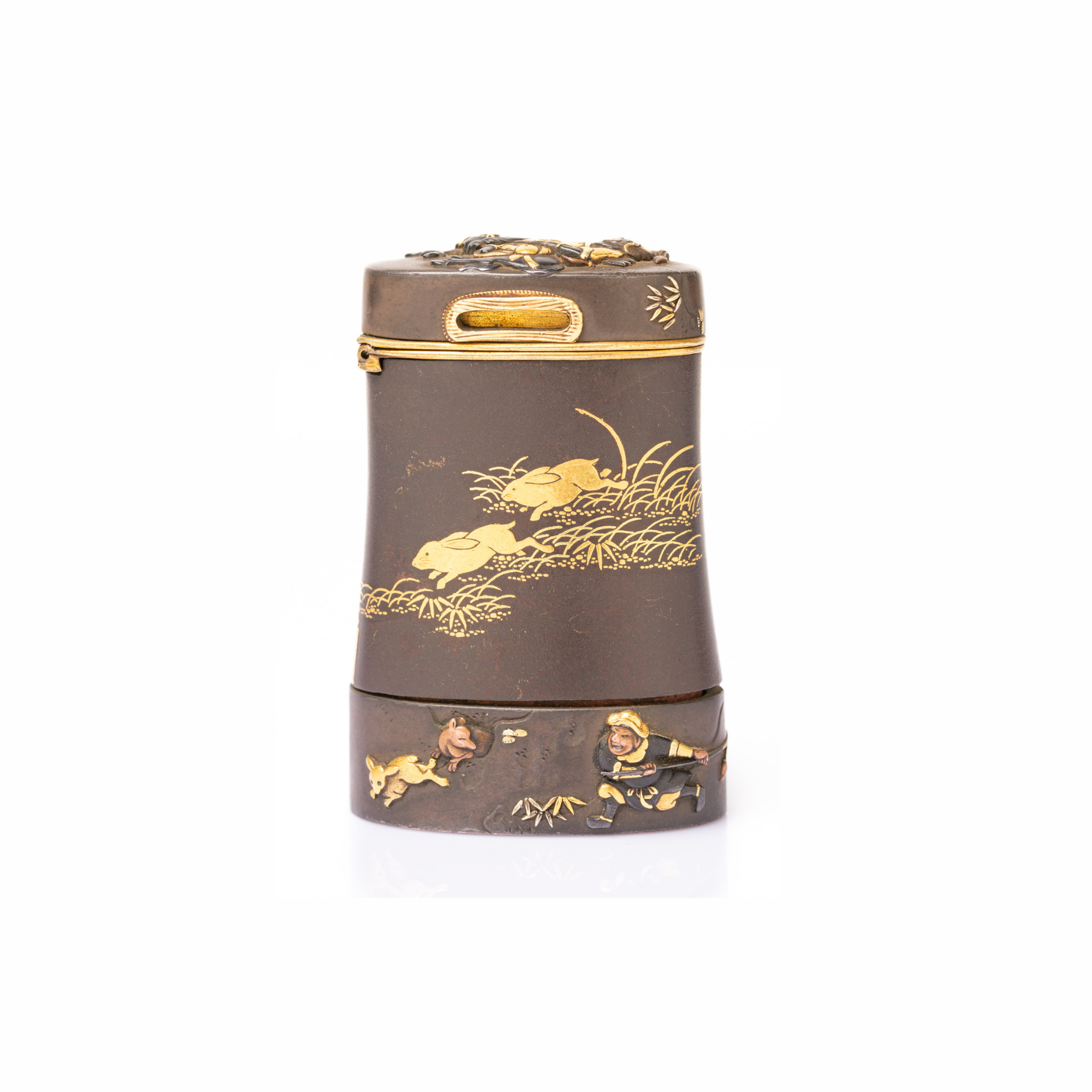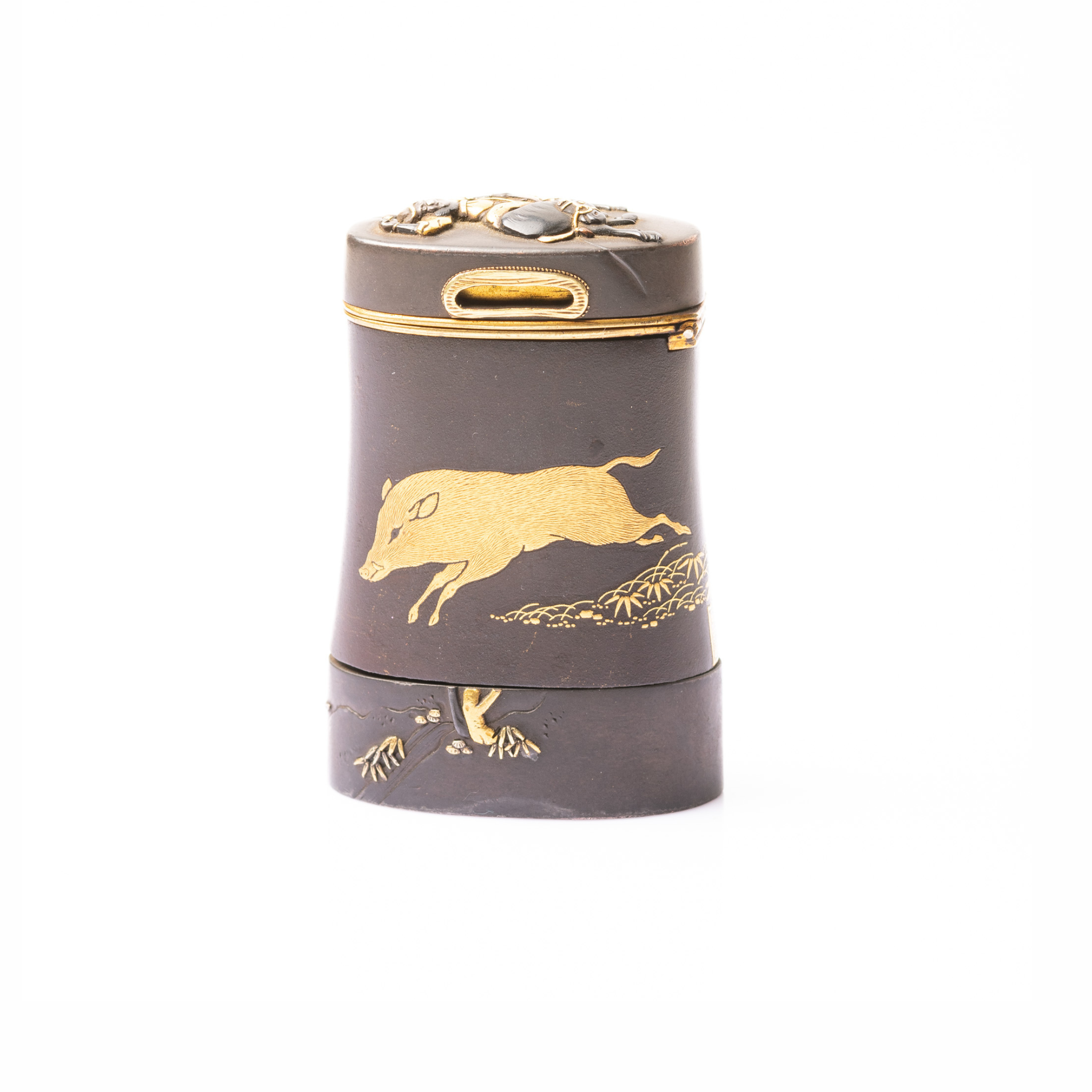

































Antique Japanese Meiji Iron Gold and Silver Vesta Case By Komai Otojiro
- Description
This exquisite Japanese Meiji iron, gold & silver vesta case was made circa 1905 by Komai Otojiro (駒井音次郎), the third son of Komai Seibei (駒井清兵衛), a sword fittings maker who established his workshop in 1841 in Kyoto, where Nunome Zogan (a form of damascene) originated. Komai Otojiro produced sword fittings until 1876, when Haitou-rei (廃刀令), an edict issued by the Meiji government of Japan, prohibited people from wearing swords.
The front of this extraordinary vesta case is decorated with a wild boar running away with a pair of hares on the other side. Both wild boar and a pair of hares are decorated with a gold inlay meticulously highlighting details such as the boar's fur or the hare's whiskers. The second part of the vesta (The Fuchi) which previously was used as a metal bordering piece between the swords tsuba (guard) and tsuka (handle) depicts a hunting scene with a hunter holding a yari (槍) a form of the straight-headed spear used by warriors and hunters, a fox looking towards a hunter, and a hare. The bottom of the vesta case has a striker in place.
The lid of the piece depicts a samurai on a horse. The lid was previously the cap at the end of the katana handle or tsuka which is known as a Kashira. The scene was made using a shakudo technique. The vesta case is signed on the edge in gold Nunome-Zogan in seal form Saikyo no ju Komai sei, beneath the dragonfly mark. The vesta case is in excellent condition with minimal signs of use.
Period: Meiji
Measuremnts : 5,5 x 3,7 x 2 cm
Weight: 95 grams
Antique Japanese Meiji Iron Gold and Silver Vesta Case By Komai Otojiro
- Related Products
- Recently viewed

















